Some Important Rivers and Falls
from north to south
click to hear
Hnq’wtutmshkwe’ - "water of the people of Sq’wt’u" (Cataldo) - Coeur d’Alene River
Q'emiln - "throat" - Post Falls
Stseqhwlkwe’ - "splashing water" - Spokane Falls
Swe'itn -Tingling Springs
sdukhwi'lke' - "water descending from above" - waterfall
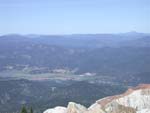 | | View looking down onto the Coeur d'Alene River and Cataldo |
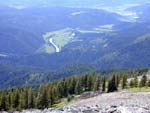 | | View looking down onto the St. Joe and St. Maries rivers |
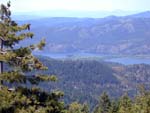 | | View looking down onto the Coeur d'Alene River |
|
|
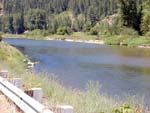 | | St. Joe River |
The rivers and waterfalls formed a great network of pathways and junctures for the Schitsu'umsh and other tribes. The rivers were the "Interstate Highway" system on which people could easily travel from place to place, while the great falls were often the destinations, the important gathering places for the tribes. Within the aboriginal territory of the Schitsu'umsh, St. Joe, Spokane and Coeur d'Alene Rivers were very navigable by canoe during most of the year, allowing travel to various village sites along the lake’s and rivers’ shores. Without such a natural system of transportation the annual seasonal round would have been much more challenging.
|
|
Benewah Creek - Hn'a'yqhn - Listen as Felix Aripa talks about of the Benewah Creek area, where crayfish were gathered and was used as a shortcut route to the St. Maries area. (recorded and edited by John Hartman on July 20, 2000 as part of the Coeur d'Alene Tribal GIS Names-Place Project) |
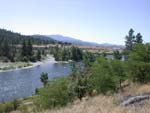 | | Spokane River |
Extending out from Lake Coeur d’Alene and these rivers, the great river falls at Celilo Falls, Kettle Falls and Spokane Falls were critical gathering places for the tribes throughout the Plateau. Annually in coordination with the spring and fall salmon runs, members from tribes would gather to trade, fish, share in recreation, renew families ties, and for the younger people, often find a future spouse. Schitsu'umsh would often exchange their highly prized deer hides and dried venison for salmon and dentalium shells, gathered and brought in from the Pacific coast.
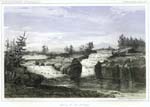 | | Spokane Falls, ca. 1853 |
While the rivers facilitated ease of travel, fishing and hunting, they also brought the Schitsu’umsh into contact with the "Water Mysteries." These beings appeared as half fish and half human, or, as in two particular instances, a "huge buffalo" or "huge fish." They lived in the lakes and rivers, and traveled underground, connected passages to "holes in the tops of mountains" or other bodies of water. One of these well-known passages linked Hayden Lake with Post Falls. The name for the Post Falls is Q'emiln, meaning, "throat," and referring to the underground opening connected to Hayden Lake. Once a person was pulled down from his canoe into this passage from Hayden Lake and came out at Q'emiln. In another account, some sisters were attacked and drowned by a Water Mystery as they gathered serviceberries along the St. Joe River. Shortly after, some hair from the sisters was discovered on the shores of a high mountain lake, the lake thus connected to the river. Also see "Land Mysteries."
© Coeur d'Alene Tribe 2002
< previous |
next >
|
|
|













